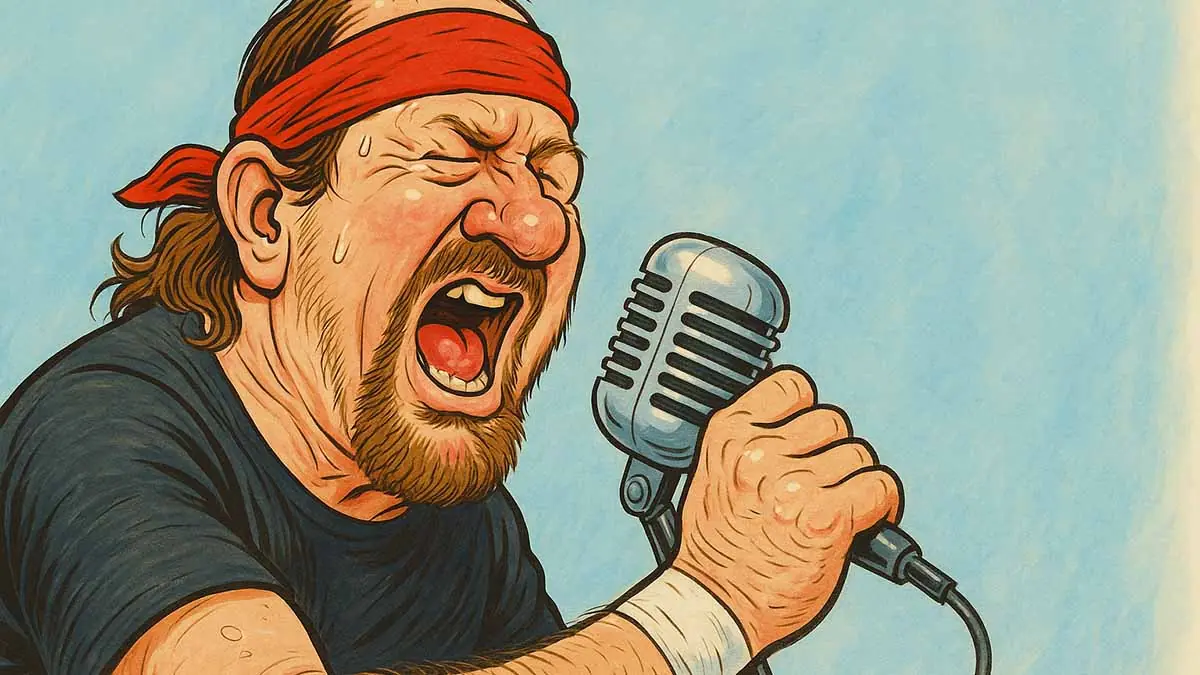‘Dramatic Dreams’ a deep dive into wacky world of DDT Pro-Wrestling
First the DDT was a pesticide. Then it became a finishing move for Jake “The Snake” Roberts (and now the move is commonplace). Then along came the DDT Pro-Wrestling promotion in Japan, where DDT stands for Dramatic Dream Team.
For those who want to explore the latter, there is a new book.
Dramatic Dreams and Those who have them: An introduction to the DDT Universe, written by Michelle Cain, came out in late 2023.
It comes across as much a dedication to DDT’s success as it does a 150-page promotional resource.
Dramatic Dreams isn’t the most objective piece of wrestling literature out there – Cain’s fandom and strong emotional attachment to the product can be felt on almost every page and in most wrestlers’ descriptions – it serves a useful purpose in documenting and recording key happenings in the wrestling business and the people that made them happen.
As the introduction suggests, this is a passion project as much as it is an attempt at historical documentation. Cain notes the ephemerality of wrestling matches and how one must dig deep to find any proof of something happening, especially if it applies to a smaller promotion.
“I also often attend shows by smaller promotions that might not get much media coverage, so writing about those not only preserves my own memories, but it may also help others to discover them,” writes Cain.
This is particularly true in the present day: an increasing number of promotions big and small are hiding their content behind paywalls and many fans looking to find specific matches have to rely on secondhand information or gamble with dubious foreign video-sharing sites.
Cain, however, doesn’t focus as much on individual matches or performances; rather, she focuses more on the people in general. She notes that DDT’s staff takes great strides in establishing and maintaining strong connections with its fans: fans that miss the chance to see their favorite wrestlers at shows can always meet them at one of the promotions two bars Drop Kick and Swandive, or their restaurant Ebisuko, all three of which are located in the Shinkuju area of Tokyo.
But once the introduction ends and we get into the meat of the matter, the book tends to flow unevenly. Perhaps following the nontraditional and maverick spirit of the company itself, Dramatic Dreams bounces around different subjects as she covers the company’s first 25 years of operation. Particularly remarkable or noteworthy shows are highlighted or serve as breaks in subject as she discusses one theme after another.
The first of these thematic chapters covers DDT’s sister and affiliate promotions, including Tokyo Joshi Pro-Wrestling (TJPW), UNION/Pro-Wrestling BASARA, Ganbare Pro-Wrestling, DDT New Era (DNA), Hard Hit, and CRUSER’S GAME. Many of these lesser promotions followed the ‘breakaway/satellite’ concept that plagued Japan all through the 1990s and 2000s and came from three possible causes:
- Larger companies either suffered unplanned internal schisms and broke apart;
- Promotions tried to create internal satellites under the same umbrella to copy the ‘outside invader concept’ that had brought New Japan in particular immense critical and commercial success; or
- Wealthy backers wanted to get into the pro-wrestling market while it was hot and formed their own entities on the backs of established stars. The fact that only about half of those aforementioned promotions are still active today speaks to the rise and fall nature of wrestling promotions in Japan.
The next section covers DDT’s traditions, tournaments and titles. The tournaments are introduced first before the titles, though, and strangely only four of the company’s titles are given any major attention: the KO-D Openweight Championship (DDT’s top singles title), the KO-D/DDT Extreme Championship (a title devoted to stipulation matches exclusively), the O-40 Championship (a title reserved for wrestlers aged 40 and older), and the now-defunct King of Dark Championship, a “cursed” title that was only defended in dark matches and awarded to the loser of the match rather than the winner. This section is perhaps the most incomplete as it barely recognizes DDT’s many now-defunct titles that were either one-time gimmicks or short-term ideas. This is a bit of a misfire as various other online resources have better historical record of DDT’s championship ideas which, in turn, helped summarize or describe the brand of wrestling the company promoted. Notable omissions include:
- The Greater China Unified Sichuan Openweight Championship, one of four titles associated with DDT mainstay and Goldust copycat Danshoku Dino
- The Fly To Everywhere World Championship, a women’s title that could also be challenged for by men as long as they wore women’s clothes
- The IMGP World Heavyweight Championship, a parody of NJPW’s world title which, as of this writing, has been held by the same person for over 3,200 days but hasn’t been defended once
Though these are minor details, the lack of explanation on DDT’s unique title ideas does a big disservice to potential fans as they helped give DDT a unique identity as the experimental promotion in an already saturated Japanese wrestling market.
There is then a sudden transition to the wrestlers’ section, in which Cain provides cursory biographies of the key people involved in establishing DDT and keeping it alive up to the present day. Particular attention is given to the likes of Sanshiro Takagi (who has served as booker for the company for many years), Atsuo ‘Poison Julie’ Sawada, Dick Togo, Danshoku Dino, Shuji Ishikawa, Daisuke Sekimoto, Shigehiro Irie, and many other longstanding local veterans. The second half of this section also includes notes on more recognizable international stars including Meiko Satomura, Masato Tanaka, Jun Akiyama, Kota Ibushi, Konosuke Takeshita, Sami Callihan, El Generico (now known as Sami Zayn) and Kenny Omega. All told this section includes biographies on 56 wrestlers, each one including photo-realistic portrait drawn by Matt Charlton.
Dramatic Dreams concludes with a few pages dedicated to one of the company’s most infamous gimmicks: the DDT Ironman Heavymetalweight Championship, a much wackier and more absurd interpretation of WWF/E’s Hardcore and 24/7 Championships. Cain notes the title’s extensive and ridiculous lineage, which includes 1,500 different champions (as of May 1, 2024, that number has reached 1.624) and has includes a wide arrange of titleholders including both male and female wrestlers, small animals held in place atop the previous champion long enough for a three-count, various inanimate objects, and at least two “invisible” wrestlers. Even the belt itself was named 1000th champion after Poison Sawada attacked Sanshiro Takagi and left the title on top of him.
Though the book reads more as a summary document filled with individual CliffsNotes on individual titles, events, and people, Dramatic Dreams is still a useful resource for curious wrestling fans. It serves its main purpose, which is to highlight what DDT brings to the table in the wrestling market, that being a company that caters to more nontraditional interpretations of wrestling in a similar vein as CHIKARA and Pro-Wrestling Guerilla, both of which have included wrestlers who served as foundations for AEW.
There is often discussion in today’s wrestling discourse about whether wackier and absurd ideas could work in pro-wrestling. And while there have been some smaller federations that have tried more of the outlandish gimmicks in North America, as Michelle Cain notes here, none of them have managed to reach the same level of outlandishness as what DDT put on during its first quarter century of activity.




